Telephoto lens photography transforms the way we see the world by magnifying distant subjects, resulting in rich, detailed images.
Unlike standard lenses, telephoto lenses compress space, changing depth perception. This feature allows photographers to isolate subjects, creating sharp, focused images with a blurred background.
Telephotos Lenses 101:

Telephoto lenses are essential for capturing far-away subjects like wildlife or athletes in action. They’re equally useful in portraiture and fine art photography, where the blurred background emphasizes the subject.
Telephoto lenses boast long focal lengths, typically ranging from 70mm to over 300mm. This range is key to their unique visual style. Mastery of focal length, aperture, and camera settings is vital for anyone looking to fully utilize telephoto lenses.
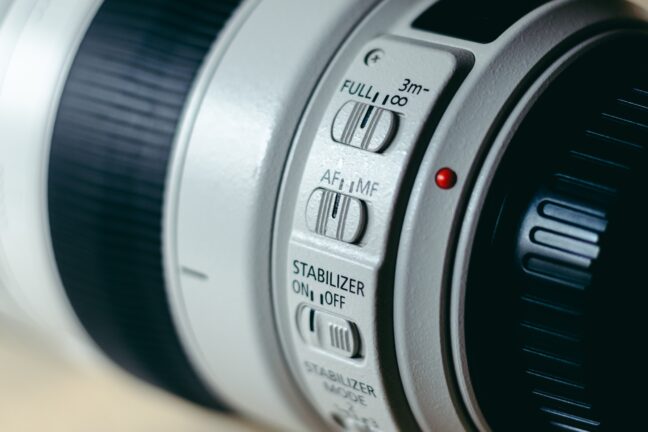
Thanks to technological advancements, modern telephoto lenses come with image stabilization and fast autofocus. These enhancements make it easier to capture sharp, high-quality images, even in difficult conditions.
Additionally, when paired with the right accessories and compositional knowledge, a telephoto lens becomes a potent tool for storytelling, offering numerous creative possibilities.
Telephoto Lens Photography: Key Takeaways
- Telephoto lenses allow for close-up detail and narrow depth of field in photography.
- Mastery of lens features and camera settings is essential for quality telephoto images.
- With the right techniques, telephoto lenses can significantly enhance photographic storytelling.
Understanding Telephoto Lenses
A telephoto lens serves a specific purpose in photography: allowing photographers to capture images of distant subjects with increased clarity and detail. These lenses often have a focal length of over 50mm, and are considered essential for certain photography genres, such as wildlife, sports, and portrait photography.
The design of a telephoto lens typically provides a longer focal length than its physical size would suggest, which is achieved by integrating special lens elements. This enables the lens to magnify distant objects, making them appear closer to the photographer than they actually are.
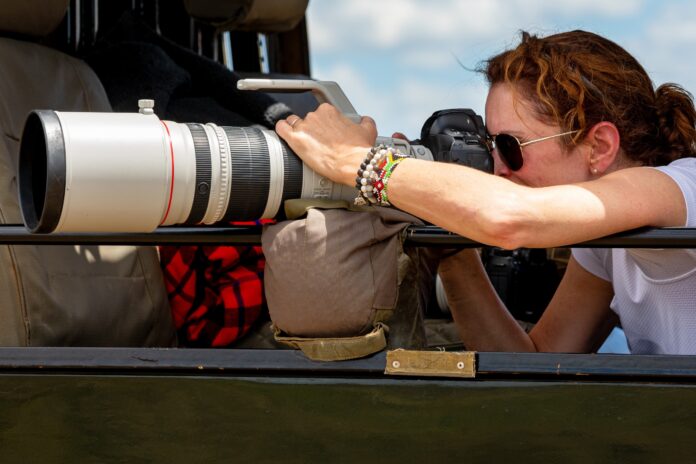
© Jane Rix/Shutterstock
One defining characteristic of telephoto lenses is their ability to create a shallow depth of field, isolating the subject from the background and giving a pleasing blur effect or ‘bokeh.’ However, telephoto lenses can also make camera shake more noticeable, which may require the use of a tripod for heavy lenses or image stabilization technologies.
When considering a telephoto lens, photographers often choose between primes and zooms. Primes have a fixed focal length such as the classic 85mm often used in portraits. Telephoto zooms, like the 70-200mm ranges, offer versatility.
| Focal Length | Typical Use |
|---|---|
| 70 – 200mm | Sports, Portraits |
| 85mm | Portraiture |
| 105mm | Weddings, Portraits |
Camera Settings for Telephoto Photography
Optimal camera settings are crucial for telephoto photography to ensure sharp images and precise focus. Understanding how aperture, shutter speed, and ISO interact can greatly enhance the quality of telephoto images.
Aperture Priority Mode
In Aperture Priority Mode, photographers set the aperture value, while the camera selects the appropriate shutter speed. Telephoto lenses with focal lengths longer than 50mm, such as the common 70-300mm range, benefit from a wide aperture like f/2.8 to allow more light, which is crucial for achieving a fast shutter speed to counteract camera shake.
Shutter Speed Considerations
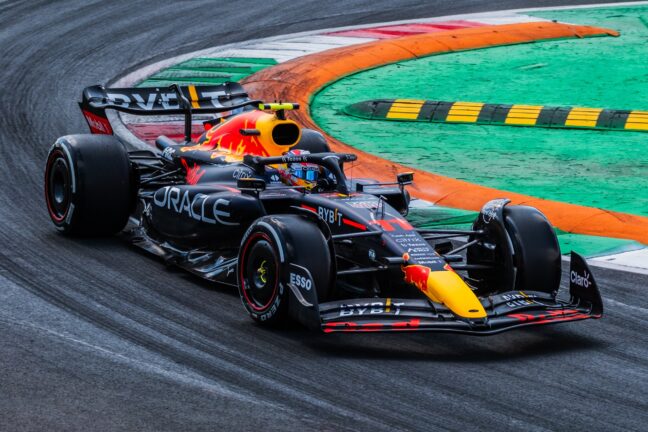
For Shutter Speed Considerations, the reciprocal rule suggests setting the shutter speed to at least the inverse of the focal length; for example, at 300mm, one should use a minimum of 1/300 second.
However, to maximize sharpness especially with handheld shots, faster shutter speeds are often necessary, such as 1/500 second or quicker.
ISO Adjustments
ISO Adjustments play a pivotal role in balancing exposure in telephoto photography. A higher ISO may be required in low-light conditions or to achieve a fast shutter speed without compromising on aperture. Yet, it’s essential to avoid excessively high ISO levels that introduce noise; photographers should find a balance, often within an ISO range of 100-800 for daylight and up to 3200 for darker scenes, dependent on the camera’s noise performance.
Telephoto Lens Techniques
In telephoto photography, maintaining image sharpness is crucial due to the magnified effect of camera shake and movement. Photographers deploy several techniques to enhance stabilization and focus, ensuring clear and impactful shots.
Image Stabilization
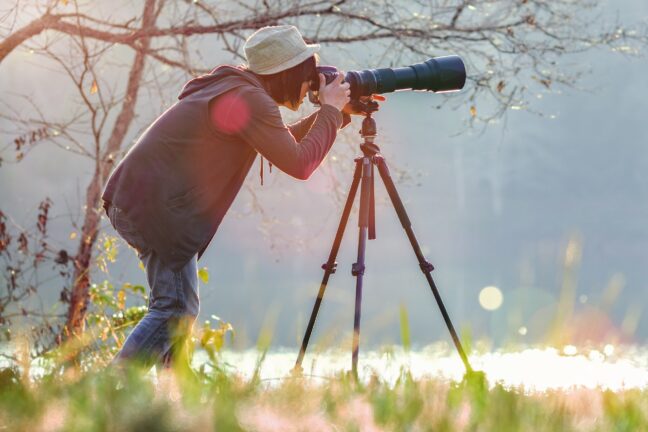
Tripods: A tripod is essential for telephoto lenses, especially those with long focal lengths. It provides a stable platform to minimize vibrations.
Lens Stabilization: Many telephoto lenses come with built-in stabilization features, which are highly effective for handheld shooting under various conditions.
Panning Method
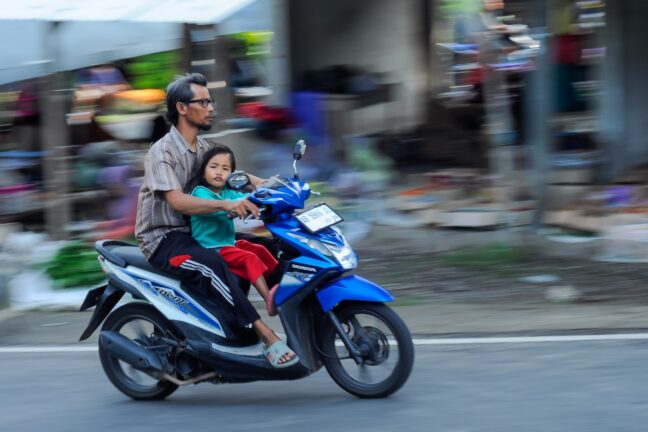
Shutter Speed: When photographing moving subjects, a faster shutter speed helps to freeze motion, coupled with panning to keep the subject in focus while blurring the background.
Smooth Movement: Successful panning requires the photographer to move the camera smoothly in sync with the subject, typically at a consistent speed.
Focus Techniques
Manual Focus: Sometimes autofocus can struggle with tracking or locking onto distant subjects. In such scenarios, photographers might switch to manual focus for greater control.
Back-Button Focus: This technique separates the focusing function from the shutter button, allowing photographers to maintain focus between shots without pressing the shutter button halfway down each time.
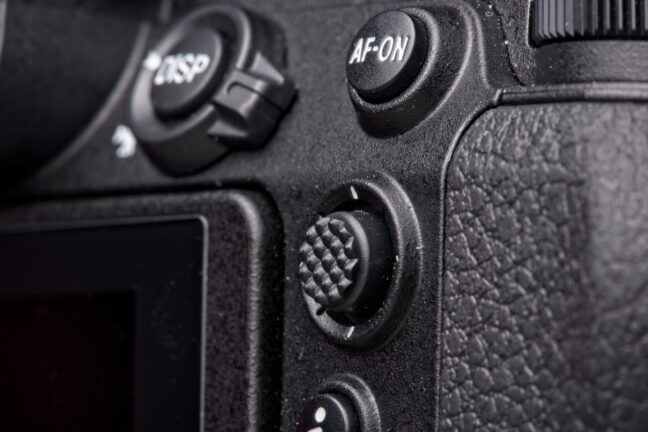
Using these techniques, photographers can capture sharp images even with the challenges posed by telephoto lenses.
Composition in Telephoto Photography
Utilizing a telephoto lens significantly influences composition in photography by allowing photographers to frame subjects tightly, compress backgrounds, and effectively harness bokeh to isolate and emphasize subjects.
Framing Subjects
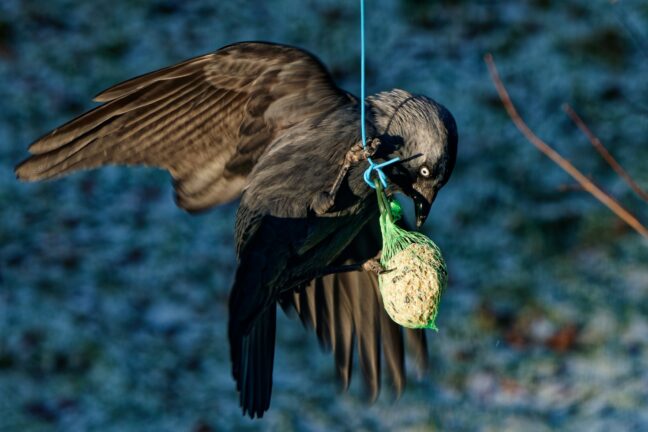
Telephoto lenses allow photographers to narrow the field of view, which simplifies subject isolation. By doing so, they can direct the viewer’s attention to the primary subject, eliminating distractions that might otherwise appear in a wider shot.
Background Compression
One of the hallmark characteristics of telephoto lenses is their ability to compress space, making background elements appear closer and larger relative to the foreground. This can enhance the sense of depth in a photograph and is particularly impactful in portraying dramatic landscapes or creating a sense of intimacy in wildlife photography.
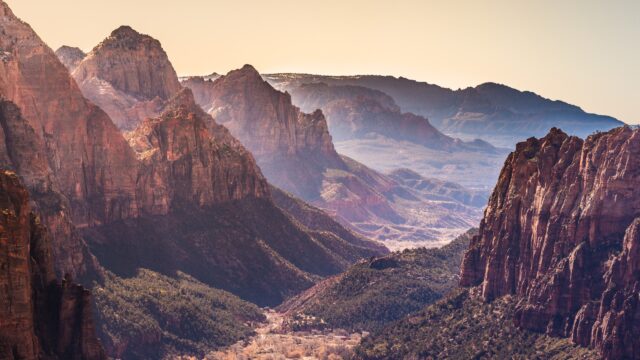
Use of Bokeh
A telephoto lens’s large focal length paired with a wide aperture, like f/2.8, provides a thin depth of field. This results in a pleasing bokeh effect—the aesthetic quality of the blur produced in the out-of-focus parts of an image. It allows for the subject to stand out with a softly blurred background, adding an artistic touch to the composition.
Choosing the Right Telephoto Lens
When selecting a telephoto lens, the photographer must consider focal length, lens type, and quality. These choices impact composition, versatility, and image clarity.
Lens Focal Length
The focal length of a telephoto lens determines its magnification power and angle of view. Lenses with a shorter focal length (70-200mm) are versatile for moderate zooming and maintain a wide enough angle for context.
Lenses with longer focal lengths (300mm and above) allow photographers to capture distant subjects with greater detail but have a narrower field of view. For example, a Nikon AF-P DX 70-300mm lens is ideal for sports and wildlife photography due to its extended zoom range.
Prime vs Zoom Lenses
Prime lenses have a fixed focal length and usually offer superior sharpness and aperture capabilities compared to zoom lenses. They encourage photographers to move and be creative with composition. Conversely, zoom lenses offer a range of focal lengths in one package, granting flexibility.
Lens Quality and Brand
Lens quality is crucial and can vary between brands. Higher quality lenses typically offer better sharpness, faster autofocus, and superior low-light performance. Brands like Nikon, Canon, and Sony are renowned for their reliable performance and comprehensive lens lineups. Photographers may also need to consider compatibility with existing cameras and whether third-party brands provide a comparable quality alternative.
The right telephoto lens can immensely enhance a photographer’s ability to capture distant scenes with clarity and precision. Whether one opts for a prime or zoom lens will depend on the specific needs of their photography practice.
Accessories for Telephoto Lens Photography
To achieve sharp images and handle various photographic conditions, photographers rely on specific accessories designed for telephoto lens photography. These include stable supports, lens enhancements, and tools for minimizing camera shake.
Tripods and Monopods
Tripods offer the utmost stability for telephoto lenses, which is crucial when capturing images with long focal lengths to avoid camera shake. Monopods, on the other hand, provide more mobility and are ideal for settings where a photographer needs to move quickly, such as during sports or wildlife photography.
Lens Filters
- UV Filters serve a dual purpose; they protect the lens surface and also reduce atmospheric haze, which is particularly helpful when shooting at a distance with a telephoto lens.
- Polarizing Filters enhance contrast and saturation in the sky, and minimize reflections on non-metallic surfaces. They are excellent for giving a clear, crisp finish to distant subjects.

© Microgen/Shutterstock
Remote Shutter Releases
These devices allow photographers to take pictures without touching the camera, preventing any potential for shake at the moment of exposure. Remote shutter releases are especially useful for telephoto photography where even the smallest movement can result in a blurred image. They can be wired or wireless, with the latter allowing the photographer to operate the camera from a distance.
Photography Projects for Practice
To master the use of a telephoto lens, photographers can engage in specific projects that hone their skills in capturing detail from a distance. These projects facilitate practice in diverse environments and subjects.
Wildlife Photography
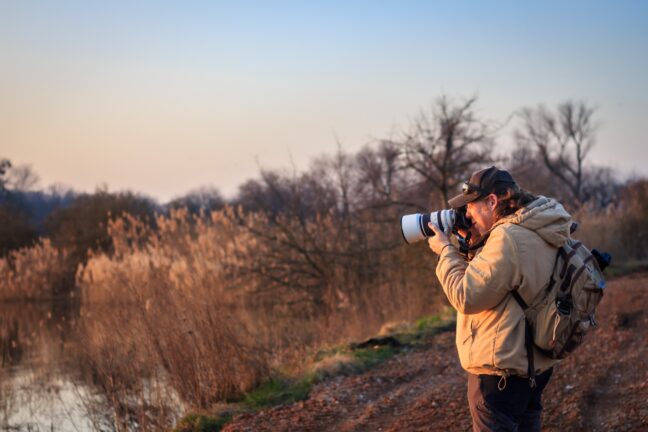
For wildlife enthusiasts, telephoto lenses are indispensable. They allow for detailed shots of animals without disturbing their natural behavior. A recommended project is to focus on bird photography at a local park or wildlife refuge. One should note the activity patterns and photograph during peak times to capture birds in flight or while feeding.
Sports Photography
Sports photography demands fast focus and the ability to capture split-second action. Practicing at local sporting events, like a soccer match or track meet, can prove invaluable. Capturing the intense moments and swift movements will enhance one’s ability to anticipate and freeze motion effectively.
Landscape Photography
While typically associated with wide-angle shots, landscapes can also be dramatically captured using a telephoto lens, emphasizing distant features like mountain peaks or cloud formations. An excellent practice activity involves photographing a landscape during different times to observe how light and weather conditions alter the scene’s mood and compositional elements.
Challenges and Solutions in Telephoto Photography
Telephoto lenses allow photographers to capture distant subjects with clarity, but they also introduce specific challenges that require practical solutions to achieve the desired results.
Dealing with Camera Shake
Camera shake is a significant concern when using telephoto lenses due to their magnification of any movement. To counteract this, photographers should adhere to the reciprocal rule, choosing a shutter speed that is at least the reciprocal of the focal length. For a 200mm lens, this means a minimum shutter speed of 1/200th of a second. Using a tripod or a lens with image stabilization can also greatly mitigate shake.
Managing Weather Conditions
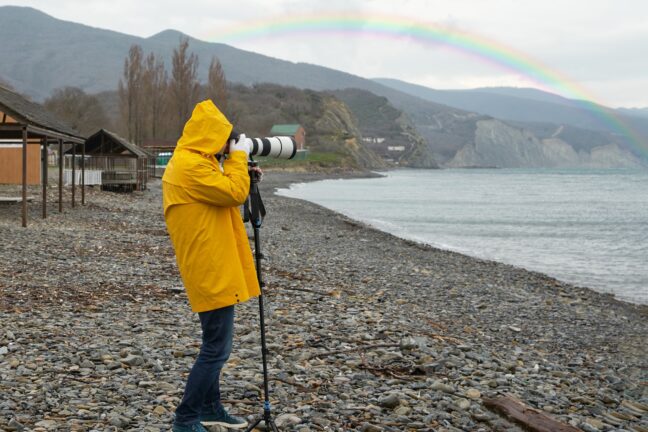
Weather conditions, such as wind or rain, can affect the stability and clarity when shooting with telephoto lenses. One can protect their gear with weather-resistant covers and use a sturdy tripod to anchor the camera during winds. Additionally, increasing the ISO setting can allow for faster shutter speeds, which can reduce motion blur in windy conditions.
Overcoming Focusing Issues
Telephoto lenses may face difficulties achieving sharp focus, especially at longer focal lengths or when subjects are moving. Utilize autofocus points strategically and consider using back-button focusing for more control. Manual focus can also be advantageous for stationary subjects, and employing techniques such as focus peaking can assist in ensuring sharp results.
